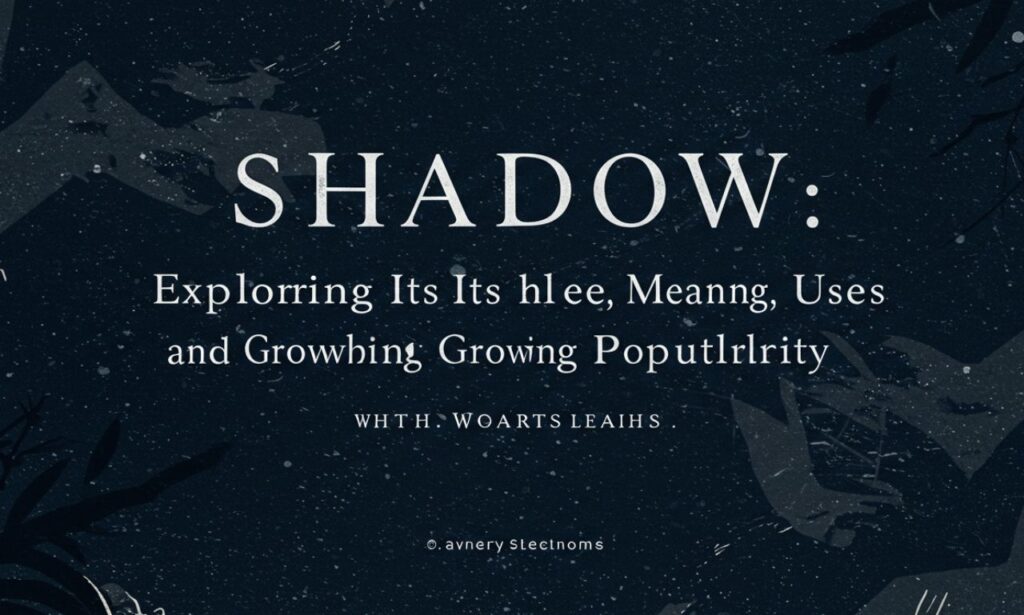In today’s world of rapidly changing language, internet culture, and technology, new terms appear all the time — and one of the more intriguing ones is schedow. If you’ve recently come across this word online, you’re not alone. It has been popping up in social media posts, creative communities, and even tech discussions, leaving many people curious about what it means and why it’s suddenly everywhere.
In this article, we’ll take a deep dive into schedow: where it comes from, how it’s used, why it’s gaining popularity in 2025, and how it has found its way into different parts of digital life.
What Is Schedow?
The word schedow is a relatively new term, and depending on the context, it can carry multiple meanings. The most common use of today is as a nickname for schedules or shadowy plans — often used casually online to mean “secret schedule,” “hidden plan,” or “something happening behind the scenes.”
For example:
-
In gaming communities, might refer to secret release dates or hidden updates.
-
In tech, it might hint at upcoming software changes that are not yet public.
-
In creative writing, is sometimes used metaphorically to describe an unseen presence or foreshadowing.
Its versatility is one of the reasons why it has caught on so quickly.
The Origin of Schedow
While schedow is not a traditional English word, it appears to be a blend of “schedule” and “shadow.” The combination creates an evocative term — one that suggests something scheduled but kept in the shadows, secret, or mysterious.
Language evolves rapidly online, and likely began as slang in niche communities before spreading more widely across social platforms like Reddit, Discord, and TikTok. By 2025, it had become a trendy term in both tech discussions and pop culture references.
Why Schedow Is Trending in 2025
Several factors have contributed to schedow’s growing popularity:
-
Tech and Gaming Culture: Gamers often discuss “secret drops” or unannounced updates. The term became a shorthand for these hidden schedules.
-
Pop Culture Influence: Influencers and content creators use when teasing new projects, music releases, or collaborations.
-
Mystery Marketing: Brands have embraced as part of “shadow campaigns,” creating hype through cryptic social posts and countdowns.
-
Memes and Humor: Social media users have turned into a joke term, applying it to anything secret or mysterious, even in daily life.
Schedow in Technology
Schedow has become particularly popular in the tech world, where software companies often release beta versions of apps under secrecy or test features quietly before a global launch.
Examples of schedow in tech:
-
Beta Testing Programs: Companies invite select users to test features in a phase before public release.
-
Development Roadmaps: Hidden product roadmaps are sometimes referred to as.
-
AI and Game Releases: Studios use to describe behind-the-scenes development cycles and secret announcements.
This playful term adds excitement and keeps tech enthusiasts engaged while waiting for the next big reveal.
Schedow in Pop Culture and Media
has also become part of storytelling and entertainment. Writers and filmmakers use the idea of a “schedow” to represent hidden timelines, secret plots, or unseen forces shaping events.
For instance:
-
In TV shows, might refer to storylines that develop quietly before exploding into the main plot.
-
In literature, schedow moments are the foreshadowing elements that hint at future twists.
-
In music, schedow drops are surprise album releases that are announced without prior marketing.
This trend has made a favorite among creative professionals who love keeping their audiences guessing.
Social Media and the Schedow Trend
On platforms like TikTok, schedow has become a buzzword for any kind of mysterious plan or soft launch. Some popular ways users employ it include:
-
Posting a cryptic photo with the caption: soon…”
-
Sharing behind-the-scenes clips labeled as “schedow leaks.”
-
Creating countdown memes to upcoming schedow events.
The viral nature of makes it perfect for meme culture and online engagement, allowing creators to play with mystery and anticipation.
How Businesses Are Using Schedow
Brands have also started to use as part of their marketing strategies. A campaign often involves teasing a product or service without fully revealing it, building hype before the official launch.
This marketing technique works well because:
-
It creates curiosity and buzz.
-
It encourages social sharing and speculation.
-
It allows companies to test audience interest before a full rollout.
For example, a sneaker brand might post an image of a blurred shoe with the caption, “Schedow release coming soon,” encouraging fans to guess what’s coming.
The Psychological Appeal of Schedow
Why are people so drawn to schedow? The answer lies in human psychology.
-
Curiosity: Humans are naturally curious about secrets and hidden things.
-
Anticipation: Waiting for a reveal creates excitement and emotional payoff.
-
Exclusivity: Being part of a event makes people feel special, like insiders.
This emotional connection makes more than just a trendy word — it becomes part of how people experience digital life.
Practical Uses of Schedow in Daily Life
Schedow isn’t just for techies and marketers — anyone can use it to add a little mystery or organization to their routine.
-
Personal Planning: Use as a fun name for your private schedule or to-do list.
-
Event Invitations: Send “schedow invites” for surprise parties or secret meetups.
-
Creative Projects: Writers and artists can tag work-in-progress content as to tease followers.
It’s a playful way to build excitement even in small, everyday moments.
Schedow vs. Schedule: What’s the Difference?
While schedow is inspired by the word schedule, the difference lies in its tone and purpose.
-
Schedule: A straightforward, practical plan of events.
-
Schedow: A plan that is hidden, secret, or deliberately mysterious.
Think of as the “cool cousin” of the word schedule — informal, fun, and full of intrigue.
Criticism and Misuse of Schedow
As with any internet trend, has its critics. Some argue that it has become overused, losing its original charm. Others worry that using in professional or corporate communication can confuse people unfamiliar with the slang.
Despite these concerns, continues to thrive, showing that its cultural impact is still strong.
The Future of Schedow
Looking ahead, may evolve even further, becoming part of official marketing language or even software terminology. Some experts predict that -based strategies will dominate brand engagement in coming years, as mystery-driven campaigns consistently outperform traditional announcements.
Conclusion
Schedow is more than just a trendy term — it’s a reflection of how digital culture thrives on mystery, anticipation, and playfulness. From tech companies testing hidden features to fans speculating about surprise music releases, keeps conversations alive and audiences engaged.
In 2025, has moved beyond niche internet slang to become a powerful cultural tool. Whether you use it to describe a hidden plan, a secret event, or simply to have fun online, adds a layer of intrigue to everyday life.
So next time you see the word , you’ll know it’s more than just a schedule — it’s a promise that something exciting is waiting just around the corner.






